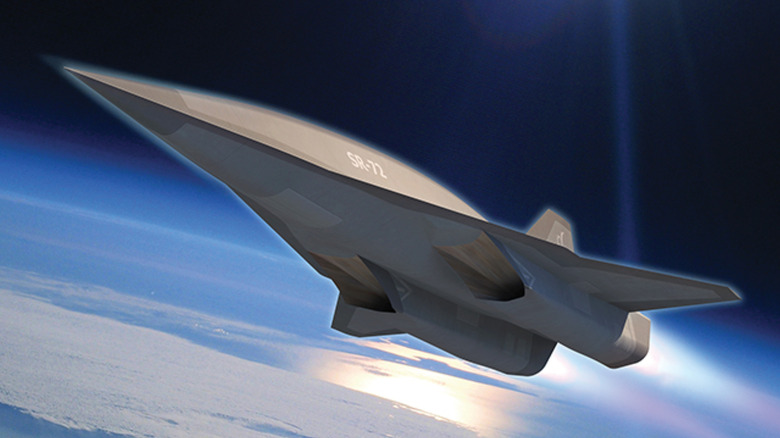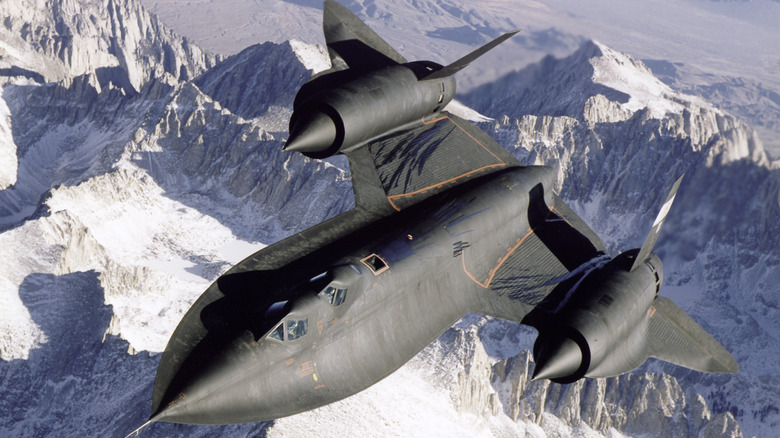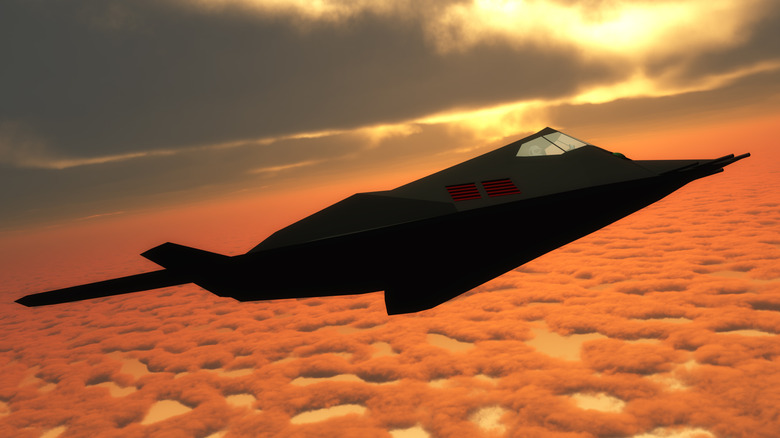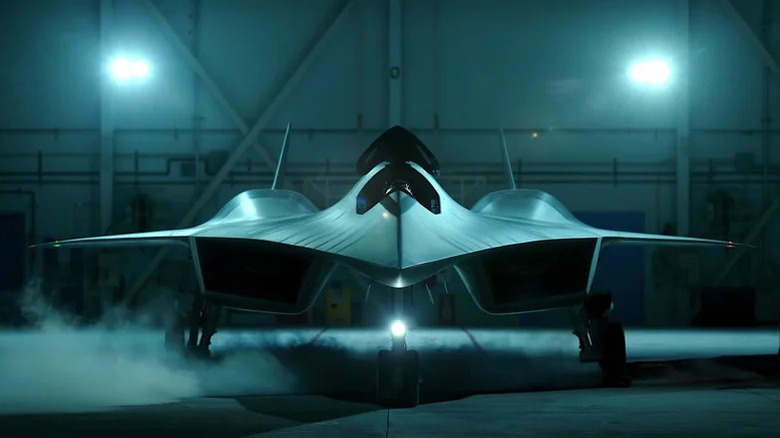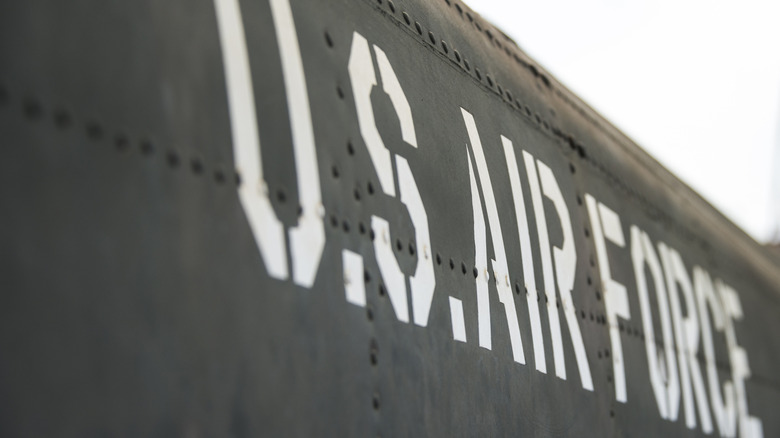The SR-72 Darkstar: 5 Intriguing Rumors About The Long-Fabled Jet
The SR-72 Darkstar has fueled speculation for nearly two decades. First rumored in 2007, the jet is believed to be Lockheed Martin's hypersonic successor to the legendary SR-71 Blackbird. Official details are scarce, and the U.S. Air Force has never confirmed its existence. Yet, credible leaks and even Lockheed's cryptic statements have kept the story alive. The aircraft's rumored capabilities — speeds beyond Mach 6, strike capability, and stealth — would represent a leap forward in aerial dominance.
Its appearance in "Top Gun: Maverick" only fanned the flames. Lockheed's Skunk Works even collaborated on the fictional "Darkstar" design, giving the movie jet enough authenticity to convince China to reorient a spy satellite to observe the set. Despite being shrouded in secrecy, multiple credible sources, including Lockheed program managers, suggest a prototype is likely in the works.
If true, the SR-72 would be the fastest air-breathing aircraft ever made, possibly operational by the 2030s. But with so much secrecy, it's hard to separate fact from fiction. What's marketing hype, and what's really flying in the classified skies above? Here are five of the most persistent (and fascinating) rumors surrounding the elusive SR-72 Darkstar.
It can fly at Mach 6 (or more)
One of the most widely circulated claims about the SR-72 is that it can reach speeds of Mach 6, or even higher. That's twice as fast as its predecessor (featured above), the SR-71, which topped out around Mach 3.3. Lockheed Martin hasn't confirmed this number, but hints from Skunk Works officials and defense writers suggest that a turbine-based combined cycle (TBCC) engine is key to achieving it. The system uses a turbofan for takeoff and subsonic flight, switching to a scramjet at high speeds. This allows one airframe to operate across a broad speed range, something conventional engines can't manage.
If successful, Mach 6 capability would mean crossing continents in under an hour. A hypersonic aircraft moving that fast would also be nearly impossible to intercept with current surface-to-air missiles or radar-guided interceptors. Speed becomes the defense, just like the SR-71 used to do, only faster. However, going that fast creates serious engineering challenges, especially around heat.
Friction at Mach 6 can raise skin temperatures to thousands of degrees. Managing that heat without the aircraft melting mid-flight is part of the technical mountain Lockheed is still climbing. Whether the SR-72 hits Mach 6 exactly, or just gets close, it's clear that extreme speed is central to the platform's design.
It's unmanned and designed for both recon and strike
Unlike the SR-71, which was strictly a reconnaissance aircraft, the SR-72 is rumored to have strike capabilities, possibly as a launch platform for hypersonic weapons. It's also expected to be unmanned, technically making it one of the fastest military drones. That makes sense at the altitudes and speeds being targeted.
Lockheed insiders have said the SR-72 could carry the High-Speed Strike Weapon (HSSW), a hypersonic missile in development. That would shift the aircraft from a passive spy plane to an active combat platform. It could surveil and then strike targets in denied-access regions before most air defense systems even detect it.
The U.S. military has emphasized this dual mission in recent hypersonic programs, and the SR-72 fits that mold perfectly. In theory, the aircraft could perform recon, strike, and egress in minutes, all while flying too fast to intercept. The rumored combination of ISR and weapons delivery makes the SR-72 far more versatile than its Cold War ancestor.
The prototype might already exist
Another persistent rumor is that the SR-72 isn't just a drawing board fantasy; a real prototype may already exist. Lockheed Martin has never officially confirmed this, but the company has hinted at breakthroughs. Back in 2017, it claimed the engine was ready for flight testing.
It said the team was building a demonstrator, and that a prototype could fly in the early 2020s. That timeline aligns suspiciously well with the aircraft's fictional debut in "Top Gun: Maverick" in 2022 (featured above). Lockheed worked directly with the filmmakers to build the "Darkstar" mock-up, using real design principles and even some prototype hardware.
The model looked so convincing, China is said to have repositioned a satellite to photograph it. Several defense analysts suspect that model was more than just a prop; it could be a stand-in for an actual aircraft undergoing classified testing. While there's no hard evidence yet, the number of converging signs points toward the SR-72 being more than fiction. The question isn't whether it's real, but how far along it really is.
It uses exotic materials to handle extreme heat
To fly at hypersonic speeds, an aircraft needs to handle temperatures that would destroy most airframes. This is where the SR-72 rumors get highly technical. The original SR-71 used titanium to withstand high skin temperatures, but Mach 6 flight can produce temperatures above even that of the Blackbird. That's why experts believe the SR-72 uses advanced materials like carbon-carbon composites. These materials don't just resist heat, they help dissipate it, preventing structural failure.
Lockheed is likely employing one of two options: a "warm structure" approach with materials such as titanium, or "cold structure" concepts like shuttle tiles. High-speed flight also challenges stealth. Radar-absorbing coatings typically degrade under heat. So stealth design on the SR-72 likely focuses on shaping and material integration rather than fragile coatings.
Surviving Mach 6 speeds is more about smart engineering than just raw power, and that's exactly the kind of puzzle Skunk Works is known for solving. In its original blog post about the concept, Lockheed said the DARPA project vehicle HTV-2 — a hypersonic glider that hit 3,500 degrees Fahrenheit and a top speed of Mach 20 — provided "lessons" that helped influence the SR-72's design.
The Air Force wants it operational by the 2030s
The last major rumor isn't about speed or stealth, it's about the SR-72's future. Multiple reports suggest the U.S. Air Force wants the platform operational by the early 2030s. That's ambitious, especially for a first-of-its-kind system. Hypersonic flight has plagued developers for decades, with dozens of test failures and design challenges. But the timeline matches what Lockheed Martin has said in past statements: a demonstrator by the mid-2020s, followed by a full platform within a decade. This aligns with the Air Force's broader hypersonic roadmap, which includes weapons, aircraft, and defenses.
The SR-72 would give the U.S. military a huge advantage in penetrating advanced anti-access systems like China's HQ-9/10 or Russia's S-400/500. Its speed, strike capability, and potential autonomy make it an ideal tool for rapid response in contested airspace. But hitting that 2030 goal requires solving every unsolved problem in hypersonic aviation: propulsion, materials, flight control, thermal management, and more. It's an uphill climb, but not impossible. Lockheed has already completed subscale engine tests. If those scale successfully, and funding remains intact, the SR-72 could be the most disruptive military aircraft since the original Blackbird took flight.
